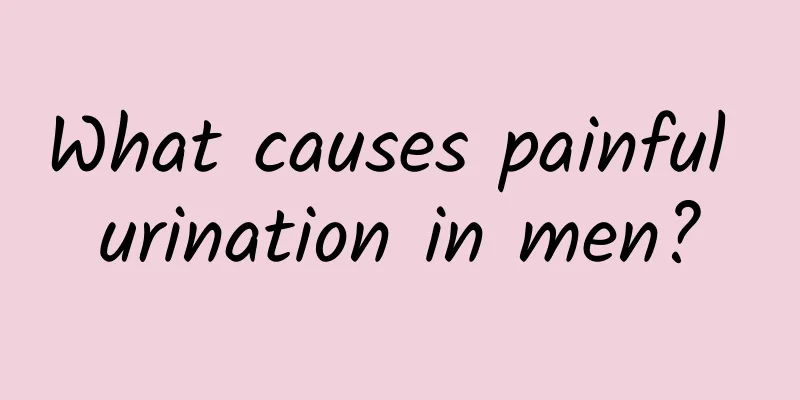What causes painful urination in men?

|
When you urinate, you will feel pain in the urethra and bladder area, which is called dysuria. Generally, urethritis, urinary tract stones, cystitis, prostatitis and other diseases can cause dysuria. The cause of dysuria can be identified based on the characteristics of the pain, and then treated through training or medication. Dysuria refers to pain in the urethra, bladder and perineum when urinating. The pain can be mild or severe, often with a burning sensation, and severe cases may feel like a knife cutting. Dysuria is common in urethritis, prostatitis, prostatic hyperplasia, seminal vesiculitis, cystitis, urinary tract stones, bladder tuberculosis, pyelonephritis, etc. The characteristics of dysuria can help to clarify the diagnosis of the disease. (1) If there is obvious pain at the beginning of urination or dysuria, the lesion is mostly in the urethra, which is common in acute urethritis. (2) Pain at the end of urination, combined with urgency, indicates that the lesions are mostly in the bladder, which is common in acute cystitis. (3) If there is obvious pain at the end of urination, or if there is still pain after urination, or if there is a feeling of "empty pain", or if there is pain even without urination, the disease is mostly in the urethra or adjacent organs, such as trigone inflammation, prostatitis, etc. (4) Sudden interruption of urination accompanied by pain or urinary retention: seen in bladder, urethral stones or urinary tract foreign bodies. (5) Difficult urination accompanied by bloating and pain: This often indicates prostate hyperplasia in elderly men and may also be seen in urethral stones. (6) Stinging or burning pain during urination: This is common in acute inflammatory conditions such as acute urethritis, cystitis, prostatitis, and pyelonephritis. Take comprehensive prevention and control measures Includes: 1. Bladder training therapy, which strengthens the nervous system's ability to control urination, reduces bladder sensitivity, and reverses abnormal urination habits. 2. Combined with drug treatment, for example: anti-inflammatory, antispasmodic, analgesic, sedative, urine alkalizing and diuretic, etc. 3. For local medication, apply 2% silver nitrate to the urethra and bladder neck. 4. Block therapy: Block therapy is performed on the proximal urethra or bladder triangle. 5. Appropriate use of small doses of estrogen for treatment is also effective. |
<<: What are the symptoms of kidney deficiency in men?
>>: A man has a dark face, how can he make it white?
Recommend
What are the symptoms of itchy glans and painful urination?
What are the symptoms of itchy glans and painful ...
What are some ways for men to delay aging?
As people age, their skin is also deteriorating. ...
The universal cooling oil has a miraculous effect on aphrodisiac and sexual pleasure, making you hot and lasting
When it comes to the effects of cooling oil, the ...
How to make hawthorn wolfberry tea? Learn a few steps
From the perspective of traditional Chinese medic...
What does low ejaculation volume have to do with?
For men, the most embarrassing thing is problems ...
What happens if I ejaculate sperm every day?
Sex is the instinct of all living things. Animals...
Spicy squid and shrimp hot pot, two different ways to enjoy the delicious moment
In many night market stalls in many cities, there...
Precautions for prostate hyperplasia
Men are prone to many diseases. To treat male dis...
What are the advantages of a man having a big nose?
In the eyes of many people, the nose is an import...
Can a guy eat his own sperm?
Regarding the secrets between husband and wife, w...
How to improve sperm quality through exercise?
Nowadays, environmental pollution is becoming mor...
What disease causes red spots on the foreskin?
Many male friends will have some red spots on the...
Penile folliculitis hard pimples
Many people notice that they have hard lumps on t...
What are the dangers of insomnia in men
Insomnia in men has a great impact on the body, b...
The best reproductive age for men
Whether male or female, everyone has the right to...









